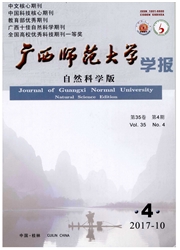

 中文摘要:
中文摘要:
本文以广西崇左国家级自然保护区弄官山片的白头叶猴(崇左种群)为研究对象,并结合扶绥九重山片和啼遵片猴群(扶绥种群)食性研究结果,比较分析白头叶猴食物组成的区域性差异,探讨白头叶猴对喀斯特石山森林破碎化的食性适应策略。结果表明:白头叶猴2个地理种群共采食181种植物,隶属于63科129属,其中,乔木和灌木121种,藤本46种,草本13种,寄生植物1种。2个地理种群的食物种类重叠率为15.8%,崇左种群的食物多样性指数明显高于扶绥种群(4.1vs2.7),说明白头叶猴猴群可能通过拓宽食谱(即增加食物种类)来获得足够的食物,以应对栖息地破碎化和人为干扰带来的变化。崇左和扶绥2个地理种群均表现出高度的叶食性,比较发现2个地理种群的觅食部位没有明显的地域差距,可能与严重破碎化栖息地内高质量食物(如果实)极度缺乏有关。
 英文摘要:
英文摘要:
Comparative study was conducted on diet of the white-headed langurs (Trachypithecus leucocephalus) inhabiting Chongzuo and Fusui areas of Guangxi Chongzuo White-headed Langur National Nature Reserve to explore their behavioral adaptation to fragmented limestone forests. The results showed that a total of 181 plant species belonging to 129 genera from 63 families were consumed by these langurs, including 121 woody plants (trees and shrubs), 46 lianas, 13 herbs and 1 epiphyte, respectively. These langurs shared 15.8M of total food species. Chongzuo population had a higher index of food diversity than Fusui population (4.1 vs 2.7), indicating that langurs consumed more plant species and increased dietary diversity in responses with food scarcity. The white-headed langurs were highly folivorous. There was no significant difference in food items between two geographic populations, which is likely correlated with fruit resource shortage in fragmented limestone habitat.
 同期刊论文项目
同期刊论文项目
 同项目期刊论文
同项目期刊论文
 期刊信息
期刊信息
